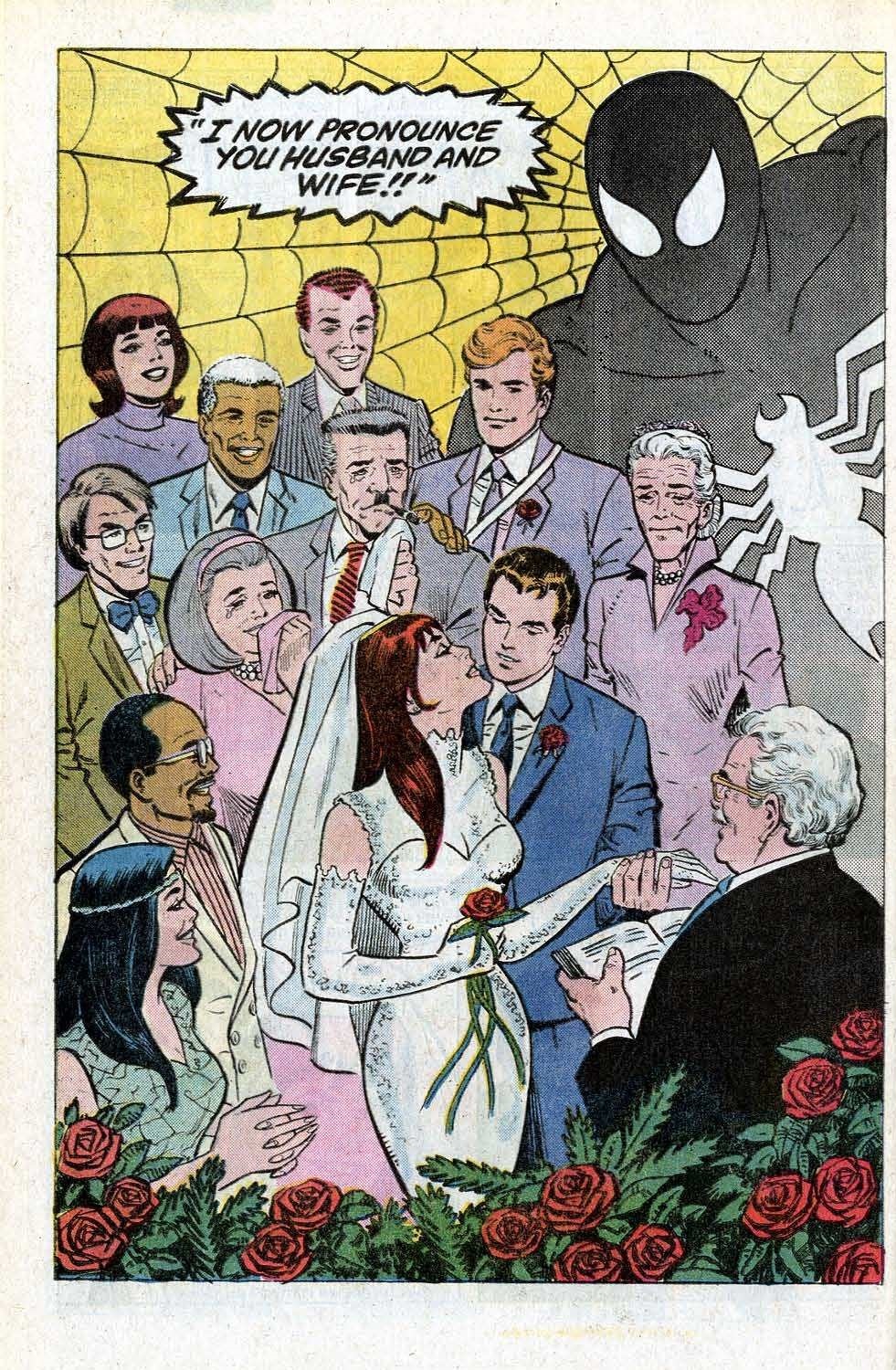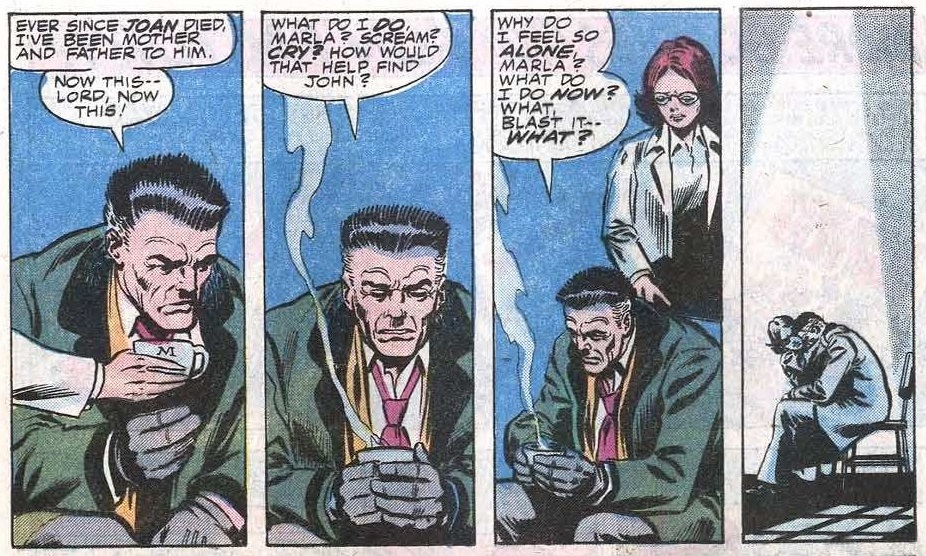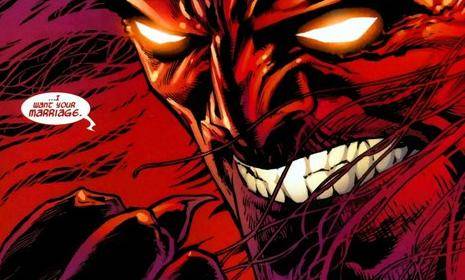
I thought it would be interesting to review every issue of underappreciated Spider-Man runs. Given the name of my column what’s a better start point than the anthology series Tangled Web?
All of these stories are available on Marvel’s Digital Comics Unlimited app, and there is an omnibus.
Tangled Web, which technically became Spider-Man’s Tangled Web with the fifth issue, was the brainchild of Joe Quesada and Axel Alonso. It wasn’t the first Spider-Man anthology series, as it followed Webspinners: Tales of Spider-Man. But where Webspinners (which I’ll likely cover in a future column) and a chain of mini-series focused on Spider-Man’s past, with an emphasis on writers and artists who have previously worked on the character, Tangled Web took advantage of Axel Alonso’s rolodex from when he was an editor for DC’s Vertigo comics to bring new talent to Spider-Man, telling accessible stories of the people affected by Spider-Man’s actions.
Tangled Web #1-3: For the first arc, Marvel reunited the creative team of the DC series Hitman: writer Garth Ennis and artist John McCrea. They created a new enemy for Spider-Man: a bully who tormented Peter in high school and whose attempts to get Peter’s powers turned him into a monster. It’s an interesting choice since Ennis had made his low-opinion of superheroes clear, and his Punisher run did feature a Spider-Man who was very much a pushover.
The take here remains pretty solid. Ennis captures Peter’s sense of humor, generosity, the Parker luck, and mature reactions to unspeakable evil. McCrea’s goofy style fits the parody. There are moments here I remember fondly nearly twenty years after I first read these comics, which happens often with Tangled Web.
B+

Tangled Web #4: One of the best-regarded stories from this run was by Greg Rucka and Eduardo Risso, with Spider-Man appearing in a single panel in the story of a family man who has to face the Kingpin after a drug deal is ruined. The story reveals the final moments of a professional, with Risso capturing the mood astoundingly well, starting with domestic scenes in a house, a night-time car ride suggesting menace and promise, and a lair for the Kingpin where we get a sense of his majesty in a way that hasn’t been conveyed since Bill Sienkiewicz’s take on the character. I’d link to various columns praising the story to show off the great art and storytelling, but these all give away the major beats of the story. Granted, it’s compelling even if you know exactly how it’s going to end.
A+
Tangled Web #5-6: Peter Milligan and Duncan Fegredo take on the Rhino made Comic Book Resources readers’ list of the 50 best Spider-Man stories. The basic concept is that the Rhino becomes a lot smarter, although one of the unusual things about the story is that we don’t get that until the second issue. The first half of the story sets up the Rhino’s decision, and shows the details of his life and what it takes to live in that suit. At this point, the Rhino had become a bit of a joke among Spider-Man villains, the type of bad guy the wall-crawler fights when a writer wants to establish what his life was like (this was how he was used in the first issue of Tangled Web, frankly.) So the first issue was necessarily to help the reader built empathy for the lunk. And then the story lives up to the promise of the main concept, as the Rhino gets everything he wants, and discovers the downside to being smarter than everyone else.
A

Tangled Web #7-9: When this story came out, Bruce Jones was one of Marvel’s rising stars, a former bronze age comics writer who had primarily worked in TV in the 1990s. He came to Marvel with an initially acclaimed run on the Incredible Hulk that was largely influenced by the 1970s TV show, with Bruce Banner chased by a shadowy conspiracy, and encountering all sorts of people who need his help. One of his ideas was to largely keep the green giant as an off-screen presence, an element that he kept for his Spider-Man story, focusing on a cabbie with medical problems who needs to make a lot of money very quickly, and all he has to trade on is knowing Spider-Man’s secret identity. Jones ended up flopping as a major writer. The conspiracy in the Hulk run got convoluted, his other Marvel project (Call of Duty: Precinct, part of an effort to focus on emergency services in the Marvel Universe in the wake of 9/11) flopped, and he went to DC, necessitating a rushed conclusion to his Hulk run, without finding the success anywhere close to what he had on the Hulk.
This three-parter might have been his best comic book ever written by Bruce Jones, as he explored some of what he did well in his Hulk run (the superhero as a mostly unseen presence, focus on the individuals affected) with a compelling doomed lead. It’s also a really good crime story with gorgeous illustrations by Lee Weeks, whose selection as artist is unusual for this series, as he had worked on the character before on numerous occasions. It was the right choice, since he excels in depicting a noir mood.
A
Tangled Web #10: Any story about kids who are fans of Spider-Man is going to be in the shadow of “The Kid Who Collects Spider-Man.” This was a lightly meta story of kids watching an animated cartoon about superheroes getting drawn into a conflict between Spider-Man and Electro. It’s a bit sparse, with nice art by Kaare Andrews. This is mainly a showcase for his talents, as he balances the realism of kids in a miserable home caught in the crossfire of a superhero battle, with a lighthearted cartoon.
B+
Tangled Web #11: This was a rare Spider-Man comic written and illustrated by the great Darwyn Cooke. I covered this in a previous column. If this had been the beginning of a new run introducing a new supporting cast and status quo, it would have been an immensely successful first issue. People around Spider-Man celebrate Valentines Day (including two Bugle reporters who think they’re going to have a date with Peter Parker) while he’s lying in a dumpster after a fight with the Vulture. It’s has some great Jonah scenes, contrasting his usual bluster with his tenderness to his wife, and it happens to include five all-new characters interesting enough to have become recurring, even if that’s not quite what ended up happening.
A
Looking at the first half of the run, this is a selection of accessible Spider-Man comics, which vary from quite good to exceptional. These are decent introductions to the character for new readers, while fans may enjoy a new interpretation on the character. It does feel a bit weird that stories that feel so recent came out a generation ago, and now require a little bit of historical context. Does anyone else have strong feelings on this run either way?
A note on grades:
I’m really overly pedantic on what the ratings mean, and I’m also probably a rather high grader, although part of it is that I’m only going to write about stuff that I’m likely to think is good.
An A+ is the highest level.
An A is a real good, highly recommended comic.
A “B” is a good comic, well-worth rereading.
A “C” is an okay/ meh comic, worth reading once.
A “D” is mediocre, not worth reading.
An “F” is garbage.
The only previous material I’ve graded in this format was JM DeMatteis’ Batman work. Future entries are expected to include the second half of Tangled Web, the Webspinners anthology, Len Wein’s Marvel Team Up run, Paul Jenkins’ Peter Parker Spider-Man run, and Spider-Man The Manga.










One of the last great non-Amazing Spider-Man titles. That was so much fun.
Thanks for that, Thomas!
@hornacek
I’d say more than a writer, that’s the job for an editor, who sets (and keeps) the tone for the book and picks the right writers.
Coincidentally, I was just reading a Newsarama article about the role of an editor.
I really loved Tangled Webs. I’m a sucker for an anthology series where every issue/story (for those multi-part ones) is a separate story and not connected to the issues that came before it.
The problem with most anthologies like this is the inconsistency. Without a single writer (or “show-runner” for lack of a better term) the quality can vary drastically from issue to issue. You could read the Kingpin/Rucka issue and tell your friends “This book is awesome!” and the first issue they pick up could be a lesser quality issue and they’d think “What was my friend talking about? This isn’t great at all.” and not give the book a chance.
It’s a different medium, but IMO The Twilight Zone is the gold standard for an anthology series done right. You had Rod Serling writing most of the episodes, and for the others they had a group of writers who wrote most of the rest. And Serling was the show-runner, making sure the episodes he didn’t write both worked and fit in the show’s tone. I’m not sure if you could do an anthology comic book like this – maybe have just one writer. But they’d have to be really good in order to do different types of stories with different tones (the whole point of an anthology series), otherwise every story would be/feel the same.
Or maybe have a “brain trust” (I hate myself for using that term) of writers who took turns writing stories. That way you’d have different voices, tones, etc. BND’s and Beyond’s group of writers were kind of an attempt at this, except they weren’t writing anthology stories.
Great column Thomas!
Tangled web is a sweet spot of mine (flowers for rhino is in my top 5 best Spidey stories ever).
I wish all B or C (hell even amazing at times) was as good as tangled web!